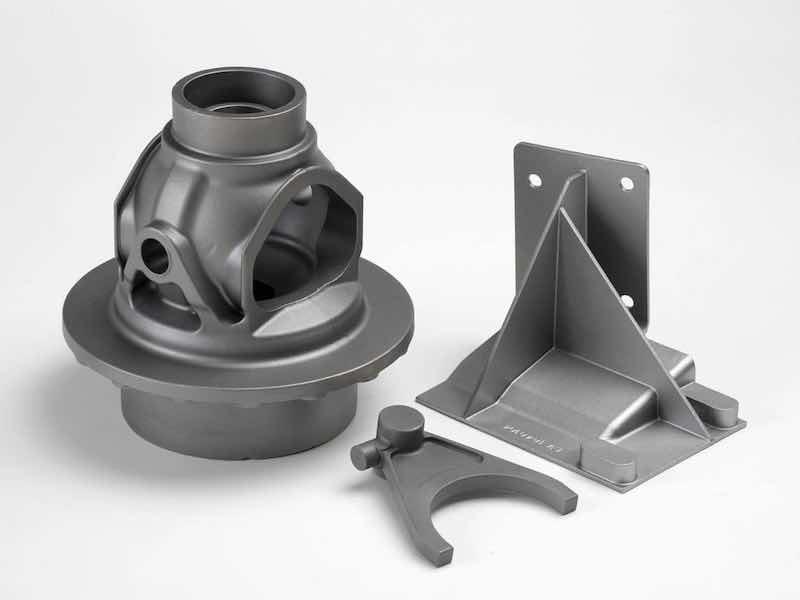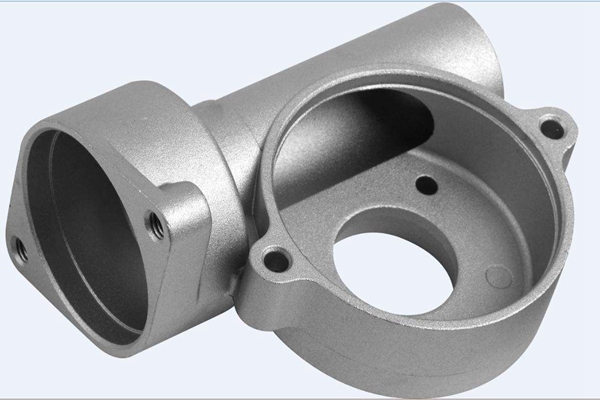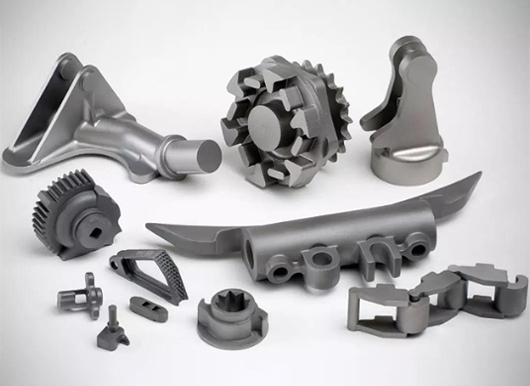Discovering the Versatile Makes Use Of and Applications of Aluminum Castings in Modern Industries
Light weight aluminum spreadings have come to be integral to various contemporary sectors as a result of their unique homes. They use substantial benefits in weight reduction, thermal conductivity, and rust resistance. From vehicle technologies to applications in customer items and building and construction, their versatility is exceptional. The true extent of their influence expands past instant benefits, hinting at broader implications for sustainability and performance. What exists ahead for aluminum spreadings in an ever-evolving industrial landscape?
Automotive Industry Innovations
The automotive sector has actually progressively embraced light weight aluminum spreadings to boost automobile performance and efficiency. By making use of aluminum, manufacturers can create lighter elements, which add to boosted fuel economy and reduced exhausts. Key applications consist of engine blocks, transmission situations, and architectural parts, where the product's strength-to-weight proportion supplies longevity without including excess weight.
Light weight aluminum castings also use remarkable thermal conductivity, which aids in much better warmth dissipation, consequently improving engine efficiency. Innovations in casting modern technologies, such as die spreading and sand casting, allow the production of intricate geometries, enabling for cutting-edge layouts that maximize space and functionality.
The recyclability of aluminum aligns with sustainability goals in the automobile field, advertising ecologically friendly practices. As the sector remains to introduce, using light weight aluminum spreadings is likely to expand, driving additional innovations in car layout and effectiveness.
Aerospace Improvements and applications
While the aerospace industry continues to prioritize weight reduction and gas performance, aluminum spreadings have actually become an essential material selection for numerous applications. Their lightweight nature, paired with high strength-to-weight proportions, permits substantial renovations in aircraft performance and efficiency. Aluminum spreadings are frequently used in architectural components, such as fuselage structures and wing parts, where minimizing weight is important.
Current developments in light weight aluminum casting technologies, consisting of improved alloy formulas and accuracy spreading techniques, have actually even more boosted the material's performance abilities. These technologies allow the production of complicated geometries and detailed designs while keeping structural stability. Furthermore, aluminum's excellent corrosion resistance warranties longevity and integrity in harsh aerospace environments.
As the aerospace market progressively embraces sustainability, aluminum spreadings offer a recyclable remedy that straightens with environment-friendly methods, making them a crucial aspect in the advancement of next-generation aircraft.
Durable Goods and Everyday Products
As customers increasingly seek light-weight yet long lasting products for day-to-day items, light weight aluminum spreadings have actually obtained popularity in numerous consumer items. The special buildings of light weight aluminum, including its resistance to rust and exceptional thermal conductivity, make it an optimal selection for things like pots and pans, family home appliances, and outside equipment. For instance, light weight aluminum cast frying pans and pots give even heat distribution, improving cooking efficiency. Furthermore, making use of light weight aluminum in products such as bicycle frames and baggage guarantees an equilibrium between stamina and transportability. Producers value light weight aluminum spreadings for their versatility, as they can be conveniently molded into complex shapes while keeping architectural honesty. In addition, the capability to reuse aluminum without degrading its residential properties lines up with growing customer choices for sustainable items. Generally, light weight aluminum castings are important to the manufacturing of sturdy, functional, and aesthetically pleasing durable goods, fulfilling the demands of modern-day way of lives.
Building and Architectural Utilizes
Light weight aluminum spreadings have ended up being a vital part in building and construction and architectural layout, especially because of their strength and light-weight nature. These residential properties make aluminum a perfect selection for various applications, including architectural aspects, exteriors, and ornamental functions - Aluminum Foundry. Building contractors and designers progressively utilize light weight aluminum spreadings for window structures, doors, and roof covering systems, enhancing both capability and visual appeals. The product's resistance to deterioration further prolongs its lifespan, lowering upkeep costs and making sure sturdiness in varied environmental conditions
In addition, aluminum can be quickly molded into intricate designs, permitting innovative architectural expressions. Its flexibility promotes the creation of customized pieces that fulfill particular style requirements, from elaborate railings to complicated supports. As sustainability becomes a priority, light weight aluminum's recyclability contributes to its appeal in environment-friendly construction techniques. On the whole, aluminum spreadings are revolutionizing the building market by giving lightweight, resilient, and visually appealing remedies.
Digital and electric Components
Light weight aluminum castings play a necessary role in the production of lightweight electrical rooms, which enhance mobility and efficiency in numerous applications. Furthermore, their exceptional thermal conductivity makes them perfect for warmth sinks, making sure peak performance and longevity of digital parts. Moreover, light weight aluminum's conductive homes contribute to its usage in different electric conductors, highlighting its value in modern-day innovation.
Lightweight Electrical Rooms
Light-weight electrical units play an essential duty in securing sensitive electronic parts from ecological aspects and physical damages. Constructed from light weight aluminum castings, these rooms Find Out More are valued for their strength-to-weight ratio, making them ideal for various applications throughout industries. Their light-weight nature help in minimizing general system weight, which is vital in mobile and portable electronics. Light weight aluminum's deterioration resistance improves toughness, prolonging the lifespan of the enclosed elements. The capability to mold light weight aluminum right into complex shapes permits personalized layouts, satisfying details demands while guaranteeing reliable heat dissipation. Furthermore, these units can be easily incorporated into existing systems, offering flexibility and convenience in modern-day technical settings. Overall, lightweight aluminum rooms greatly add to the effectiveness of electronic tools.
Heat Sinks and Conductors
While many materials are made use of in electronic elements, aluminum castings stand out for their performance in heat monitoring as heat sinks and conductors. Their excellent thermal conductivity enables effective warmth dissipation, which is vital in preventing the overheating of electronic gadgets. Aluminum's lightweight nature better boosts its suitability for applications where weight is a considerable variable, such as in aerospace and automobile markets. Additionally, aluminum spreadings can be conveniently molded into intricate shapes, supplying layout adaptability for maximizing thermal performance. The deterioration resistance of light weight aluminum also contributes to the longevity and reliability of these elements in numerous environments. As modern technology advances and gadgets come to be much more compact, the need for reliable heat administration options, like aluminum spreadings, remains to grow.
Marine Sector Usage
The aquatic industry significantly depends on aluminum spreadings for their remarkable sturdiness and corrosion resistance. These homes make aluminum an ideal selection for different applications, including boat hulls, engine parts, and marine equipment. The lightweight nature of aluminum castings enables enhanced fuel efficiency and less complicated ability to move in watercraft, which is vital for both entertainment and commercial vessels.

Light weight aluminum spreadings additionally supply significant expense advantages due to their long life expectancy and reduced maintenance requirements, decreasing the general operational expenditures for marine drivers. In addition, the adaptability of light weight aluminum permits see it here intricate styles that can meet details performance needs.
Makers in the marine market use advanced spreading techniques to create intricate forms, making certain that components satisfy extensive safety and security and performance requirements. As the need for high-performance aquatic vessels expands, aluminum spreadings are positioned as a key material in improving the performance and durability of aquatic tools.
Sustainability and Recycling in Light Weight Aluminum Spreading

Aluminum Recycling Process
Recycling aluminum plays an important duty in reducing ecological influence and saving sources within the casting market. The light weight aluminum recycling process starts with the collection of scrap aluminum, which can consist of old components, producing waste, and post-consumer items. This scrap is then sorted, cleansed, and shredded right into small pieces to facilitate melting.
Once prepared, the aluminum scrap is melted in a heater at reduced temperatures than main aluminum manufacturing, substantially decreasing power intake. The molten aluminum is after that cast into ingots or various other forms for reuse in different applications - Aluminum Castings. This closed-loop system enables for the effective recuperation of aluminum, preserving its buildings while lowering the need for virgin materials. Consequently, the recycling process is a vital element of lasting techniques in aluminum casting
Ecological Benefits
While aluminum casting plays a critical role in various industries, its ecological advantages are especially exceptional relating to sustainability and source preservation. The lightweight nature of light weight aluminum adds to power efficiency in transportation, decreasing fuel consumption and emissions. In addition, aluminum casting facilitates making use of recycled materials, considerably decreasing the power required for production compared to key light weight aluminum. This recycling process minimizes waste and lessens the ecological influence connected with mining and refining raw products. Aluminum is 100% recyclable without destruction of its residential properties, advertising a sustainable lifecycle. By picking light weight aluminum casting, sectors can significantly reduce their carbon impact while promoting source efficiency, making it an essential option in the pursuit of eco-friendly production methods.
Closed-Loop Equipments

Often Asked Inquiries
What Are the Key Benefits of Aluminum Castings Over Various Other Products?
Light weight aluminum spreadings offer light-weight residential properties, exceptional corrosion resistance, and high strength-to-weight ratios. They can be easily molded right into intricate forms, provide great thermal and electric conductivity, and are cost-efficient, making them more effective over lots of different materials.
Exactly how Is the Light Weight Aluminum Spreading Refine Eco-friendly?
The aluminum spreading procedure is environmentally pleasant due to its recyclability, low energy usage, and minimized waste production. Its capacity to utilize recycled materials reduces the carbon footprint, promoting sustainability within producing methods.
What Prevail Obstacles in Aluminum Casting Production?
Common challenges in aluminum casting manufacturing consist of keeping dimensional precision, handling thermal tightening, protecting against defects like porosity and incorporations, ensuring correct mold and mildew style, and enhancing production efficiency while minimizing product waste and ecological influence.
Just How Do Aluminum Castings Contrast in Price With Various Other Production Techniques?
Aluminum spreadings commonly provide competitive costs contrasted to other manufacturing approaches, specifically for medium to high-volume production. Their reduced preliminary tooling expenses and effective material usage can lead to beneficial economics with time.
What Future Patterns Are Expected in Light Weight Aluminum Casting Modern Technology?
Future patterns in aluminum spreading innovation are anticipated to consist of developments in automation, improved alloy make-ups, enhanced reusing methods, and the assimilation of 3D printing, all focused on raising effectiveness, reducing prices, and this hyperlink reducing ecological impact.
Current advancements in light weight aluminum casting innovations, including enhanced alloy formulations and accuracy spreading techniques, have actually further boosted the material's performance capacities. Aluminum castings have actually come to be an essential element in construction and architectural layout, particularly due to their stamina and light-weight nature. The light weight aluminum reusing procedure starts with the collection of scrap light weight aluminum, which can consist of old components, manufacturing waste, and post-consumer products. As soon as prepared, the light weight aluminum scrap is melted in a heating system at reduced temperature levels than main light weight aluminum production, significantly lowering energy consumption. Furthermore, light weight aluminum spreading facilitates the use of recycled materials, substantially lowering the energy required for manufacturing compared to main aluminum.